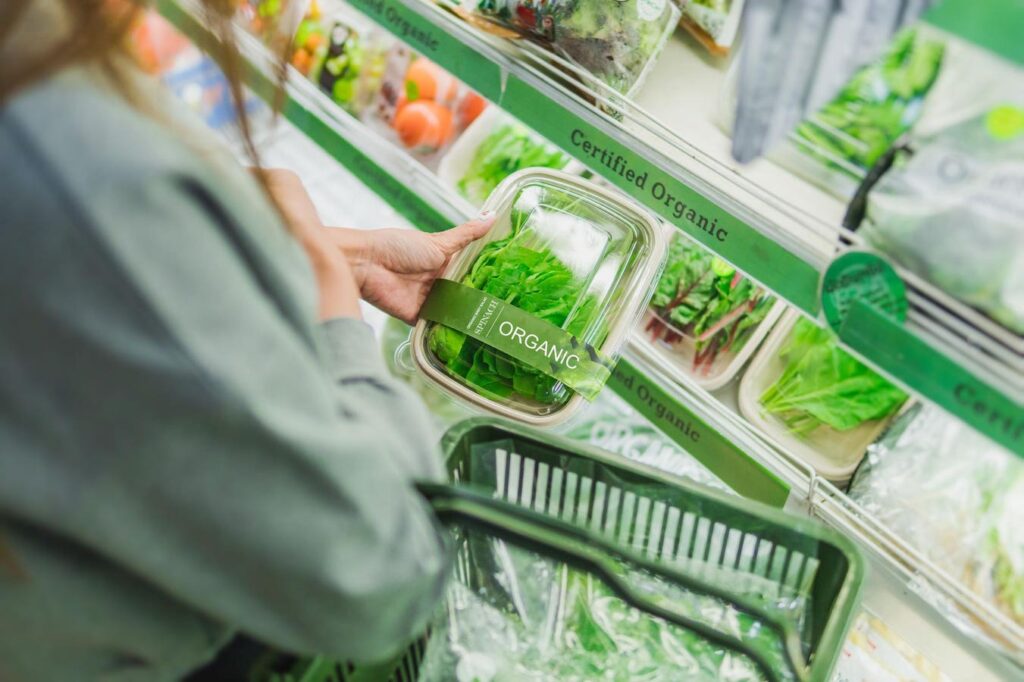Greg Vetter, entrepreneur, founder of Alta Fresh Foods, and author of Undressed.
The next decade won’t belong to the biggest food manufacturers. It’ll belong to the boldest. The ones who stop hiding behind slick labels and start owning their impact—ingredient by ingredient, label by label, choice by choice. If you’re an aspiring entrepreneur, side hustler or early-stage brand builder looking to break into food and beverage, these five trends are not abstract industry noise—think of them as your roadmap.
Through Tessemae’s and Alta Fresh Foods, I’ve lived this transformation. From mixing lemon garlic dressing at 3 a.m. in a borrowed kitchen to becoming the top organic brand in Whole Foods, I’ve seen what happens when you bet on clean. I’ve also seen what happens when you don’t.
Let’s talk about what’s coming—and how you can win.
1. Radical food transparency is becoming non-negotiable.
Clean labels used to be a differentiator. Now they’re the bare minimum. Gen Z and Millennial consumers don’t just want to eat clean—they want to know why it’s clean. They’re flipping over every bottle and Googling every additive. If your ingredient list reads like a science project, you’re out.
What’s rising in its place is radical transparency: not just what’s in your product, but where it’s from, how it’s made and what it means for your health and the planet. I’m seeing smart manufacturers increasingly adopting QR codes that take consumers directly to sourcing details, third-party test results and production methods. Think of it as the farm-to-label version of open-book management.
Action Step: If you’re just getting started, don’t wait until you scale. Build transparency into your story now. Take your audience behind the scenes. Show them your production space. Introduce your ingredient suppliers. Give them a reason to trust you before they buy.
2. Clean eating is moving from lifestyle to legislation.
It’s not just consumer pressure anymore—regulators are catching up. European bans on toxic food dyes and additives have exposed how far behind U.S. standards are. States like California have already begun outlawing chemicals like brominated vegetable oil and potassium bromate, and more are on the chopping block. That means clean eating is no longer a niche—it’s the standard that the law is beginning to require.
For small food brands, this is an opportunity in disguise. The big guys can’t pivot fast enough without rewriting entire supply chains. You, on the other hand, can build from the ground up with integrity baked in.
Action Step: Future-proof your product. Research which ingredients are flagged by consumer watchdogs or banned overseas. Build clean compliance into your formula now instead of waiting for a fine—or worse, a recall.
3. The new battlefield is the produce department.
Here’s a secret most food startups overlook: Grocery stores are real estate plays. And the produce department is the beachfront. That’s where shoppers go first. It’s where trust is highest. It’s where clean brands get discovered. That’s exactly why I fought to get Tessemae’s dressings in the refrigerated produce section instead of buried with the shelf-stable stuff. And it’s why we won.
Refrigerated space signals freshness. It forces you to make a better product. It tells the customer: “This belongs next to the broccoli, not the back of the store.” More and more manufacturers are realizing that premium placement and refrigerated relevance drive brand growth. If your product lives in the fridge, it better feel like it earned that spot.
Action Step: If you’re still developing your product, think about where it wants to live. How does your packaging, shelf life and merchandising strategy support that? Start pitching grocers with that placement in mind.
4. Third-party certifications are gaining power—and scrutiny.
Non-GMO. Organic. Whole30 Approved. Certified Gluten-Free. These logos used to be shortcuts to trust. But consumers are getting smarter. They want to know who is certifying what—and whether they can trust that authority.
At the same time, a new wave of certification is rising, one focused on levels of health rather than just ingredients. Think: “Is this ultra-processed?” instead of “Is it organic?” That’s part of the reason I helped launch an 8-tier food ranking system to give consumers clearer guardrails on what’s actually nourishing them. It’s time to move beyond binary labels. Not all “organic” foods are healthy. Not all “natural” products are clean.
Action Step: If you’re seeking a certification, choose ones that mean something to your audience and can be explained in one sentence. Use your platform to teach your customers what it means and why it matters.
5. The next generation of food brands will be story-first.
You’re not just selling snacks. You’re selling a philosophy. A mission. A reason for someone to spend their money on your label instead of the 18 others next to it. In a world drowning in options, what rises is meaning.
For early-stage founders, this is your edge. You’re not a faceless conglomerate. You’re a real person with a story people can root for. Use it. At my company, it wasn’t just about salad dressing. It was about a family fighting for something better. It was about a mom’s recipe. It was about late-night shifts and risking everything. And people responded.
Action Step: Build your brand like a documentary, not a commercial. Let people see the messy moments. The sacrifice. The passion. That’s what sells.
Final thought: The next decade belongs to the brave.
The food industry is transforming faster than ever. Consumers are demanding honesty. Laws are tightening. Shelf space is shifting. It can feel overwhelming, but it’s also wide open for those willing to bet on clean, transparent, values-driven business. If you’re building your business on the side right now, or bootstrapping your way to launch, remember: you don’t need everything figured out. You just need to start with the truth.
Forbes Business Council is the foremost growth and networking organization for business owners and leaders. Do I qualify?
Read the full article here











